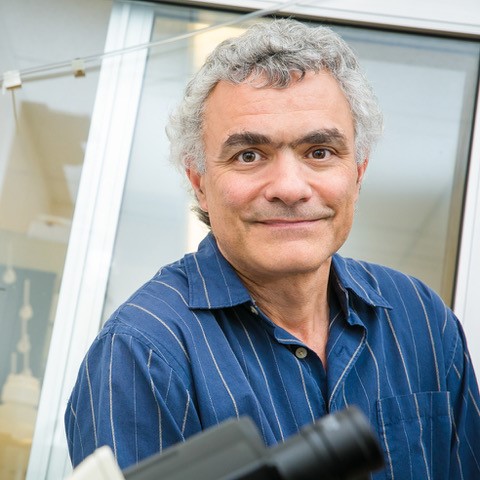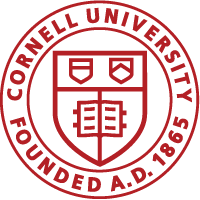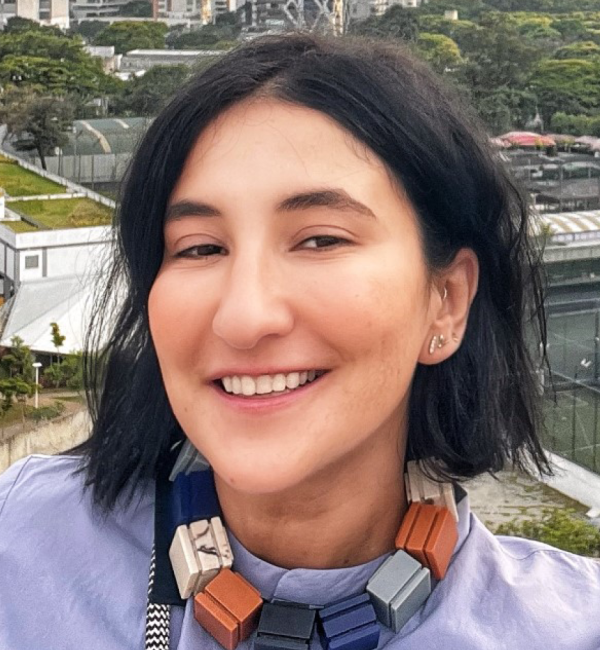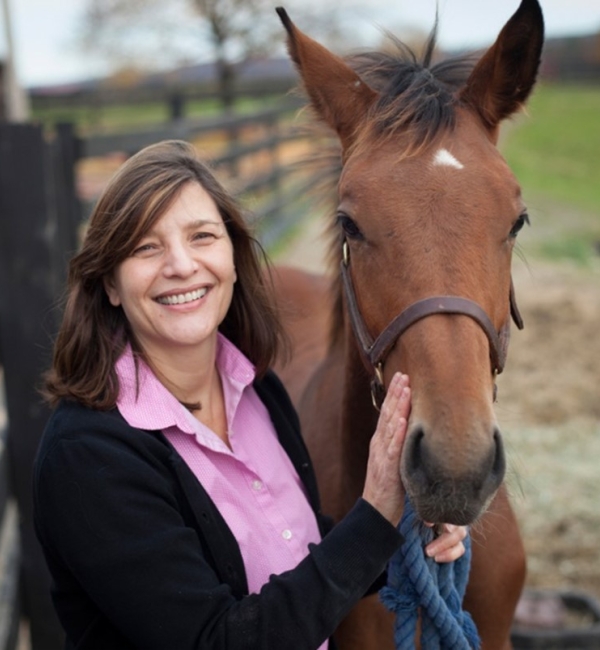| Faculty Name and Picture | Research Area(s) |
|---|---|
|
Joeva Barrow | Mitochondrial disease; obesity and metabolic disease. - lab |
|
Ana I. Bento | In my lab we seek to understand the dynamics of biological populations and epidemics, focusing on how to bring experimental and observational data together with mathematical theory. Tackling biological questions of public application and importance. The lab ongoing research falls into the following themes: (i) pathogen evolution and phylodynamics; (ii) seasonal disease transmission; (iii) anthropogenic effects (e.g. vaccines); (iv) adaptive behavior. |
|
Adam Boyko | Genomic investigation of dogs as a model of genetic disease and evolutionary genetics |
|
Ilana Brito | Pioneering new methods to detect horizontal gene transfer in natural microbial communities to understand the rate and triggers of horizontal gene transfer; the impact of human microbiome diversity on world global health issues - lab |
|
Nicolas Buchon | Host/microbe relationships and control of intestinal stem cell behavior in homeostasis and disease - lab |
|
Jonathan Butcher | Mechanobiology of development; developmental signaling reactivation in adult cardiovascular diseases; tissue engineering and regeneration - lab |
Yung-Fu Chang | Mechanisms of infection, particularly leptospira and salmonella |
| Postpartum ovarian and uterine health; epidemiology; regenerative medicine; microfluidics and assisted reproductive techniques - lab | |
|
Ruth Collins | Pharmacology; cancer cell biology; small GTPase regulation of intracellular traffic and cellular growth control - lab |
|
Charles Danko | Medical genetics and genomics and cancer biology research |
|
Arunika Das | genetic and epigenetic mechanisms of chromosome inheritance and aging during meiosis and early development. |
|
| (Minor Member) As a trained, American College of Laboratory Animal Medicine (ACLAM) board certified veterinarian, Dr. Erin Daugherity has a strong interest in animal models of disease, the humane use of animals used in teaching and research, and applying the 3 R’s (reduce, refine, replace) to the use of animals in research. |
|
Iwijn De Vlaminck | focuses on the development of precision medicine technologies to monitor and study infectious and immune related disease. - lab |
|
Mandi de Mestre | processes for a healthy pregnancy and delivery of a neonate, pathologies that compromise pregnancy. Improve diagnostics and treatments for pregnancy conditions, primarily in the mare |
|
Matthew DeLisa | Molecular biotechnology; protein biogenesis and folding pathways; protein engineering - lab |
|
Callum Donnelly | Theriogenology, equine genomics/ epigenomics, pregnancy/placental physiology, Vitamin E |
|
Jacquelyn Evans | hereditary diseases in dogs to identify genetic variants contributing to disease development - lab |
|
| Cellular and molecular mechanisms involved in B-cell response; neonatal immunology and response to vaccination; immunomodulation using biologic response modifiers; cancer immunotherapy; characterization of primary and secondary immunodeficiencies - lab |
|
Laura Goodman | Pathogen discovery and surveillance, with focus areas on tick-borne disease and antimicrobial resistance; exploring the underlying mechanisms of infectious disease emergence and identifying biomarkers to detect and prevent emerging threats to humans and animals |

| mechanisms of dendrite morphogenesis and neurodegeneration using Drosophila sensory neurons as a model system - lab |

| bioactive lipids shape host-microbe interactions; host-microbe molecule exchange and bioactive lipids in infant nutrition |
|
Natasza Kurpios | Tissue morphogenesis; cell shape and architecture; organ development; gut morphogenesis; mammary gland biology; breast cancer - lab |
 Colleen Lau | NK cells adaptive features to explore immune memory in context of classic antigen-dependent and antigen-independent memory responses. Multi-omic approaches with genetic mouse models to interrogate in vivo, in vitro, and in silico to generate an immune memory program. - Lab |
|
| The evolutionary and functional genetics of insect-pathogen interactions - lab |

| Molecular genetics of aging; signaling pathways of nutrient sensing; molecular basis of stress response - lab |
|
David Lin | Axon guidance; neurodevelopment; epilepsy; autism; genomics - lab |
|
Eirene Markenscoff-Papadimitriou | gene-regulatory mechanisms that generate diversity during brain development; probe function of human genetic variants linked to autism - lab |
|
| Stem cells and cancer; pathogenesis of ovarian and prostate cancers; modeling of human disease in genetically modified mice and human organoids - lab |

| Cancer metabolism and therapeutic opportunities - lab |
|
Kimberly O'Brien | Calcium metabolism and bone health; control of maternal/fetal nutrient; partitioning and cellular mineral transport; micronutrient status in international settings; development of mass spectrometric methodology; pediatric bone health; pregnancy and mineral metabolism in adolescents - lab |
|
| A new single cell sequencing approach; RNA-seq, Ribo-seq and scRNA-seq. |

| Translational control of gene expression; signaling pathways in stress response; protein quality control in metabolic diseases - lab |
|
Richa Sardana | Membrane protein trafficking and quality control mechanisms - lab |

| Role of cellular protein, lipids, and glycans play in viral infection |
 John Schimenti | Genetics of reproduction and germ cell development; cancer genetics; meiosis; DNA repair; genome manipulation in mice; functional genomics - lab |
 Praveen Sethupathy | Functional genomics; gene regulation; molecular genetics; gastrointestinal physiology; stem cell biology; metabolic disease - lab |
|
Ayshwarya Subramanian | Dr. Subramanian’s research focuses on understanding the principles governing cellular heterogeneity, crosstalk, and evolution in the context of human tissues and disease. Her interdisciplinary research program operates at the nexus of high-throughput data measurements, development and application of computational methods, and experimental design, with key collaborations for clinical samples, and mechanistic validations in vivo and in situ. |
|
| Basic cellular and molecular mechanisms implicated in cell fate choice and stem cell activity within tissues - lab |
|
Meng Wang | We use molecular biology, genetics and animal models to dissect how our metabolism gives rise to chemicals that damage our DNA- Wang Lab |
|
Gary R. Whittaker | Pathogenesis of influenza viruses, corona viruses and arena viruses; host range and receptors; activation of membrane fusion; macrophage- and neurotropism; anti-viral therapeutics; diagnostic tests; virus-bacteria co-infections - lab |
 Haiyuan Yu | The Yu group performs research in the broad areas of Network Systems Biology. We use integrated computational-experimental systems biology approaches to determine protein interactions and complex structures on the scale of the whole cell. In particular, we focus on protein-protein and gene regulatory networks and seek to understand how such intricate systems evolve and how their perturbations lead to human diseases, especially autism spectrum disorder and cancer. |
|
Mariana Wolfner | Genetic, molecular, developmental, and evolutionary studies of seminal proteins' functions in fertility, and of mechanisms of egg activation and initiation of embryogenesis; investigate conserved phenomena in reproductive biology, using primarily the Drosophila model system - lab |


































